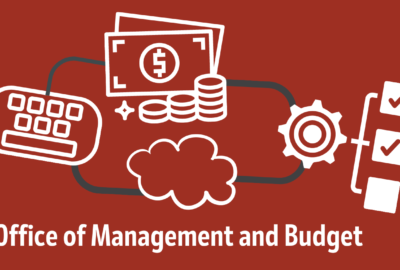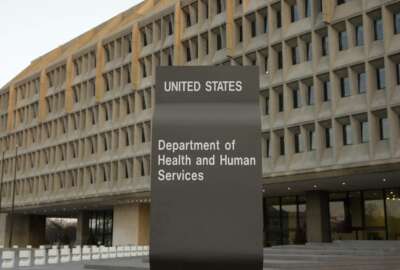OMB’s new guidance, RFI boost grant modernization efforts
OMB’s 2024 Revisions of the Uniform Grants Guidance aim to streamline, simplify and expand the overall reach of the $1.2 trillion that agencies award each year.
The long-awaited and much-anticipated update to the basic management standards for the federal grants community is out. The Office of Management and Budget’s 2024 Revisions of the Uniform Grants Guidance aim to streamline, simplify and expand the overall reach of the $1.2 trillion in grants and cooperative assistance agencies pay out each year.

“Terms like federal financial assistance and Uniform Grant Guidance may sound mundane or, perhaps, a little bit bureaucratic. But it’s really the plumbing of our federal programs, and plumbing matters,” said Jason Miller, OMB’s deputy director for management, at an event in the White House yesterday celebrating the roll out of the guidance. “I’m particularly proud of one area of this guidance, something our team has been really focused on from the get go, ensuring that an overhaul to this guidance lowers burden on recipients. Of course, we need strong and clear rules for how federal funds are spent. But those rules should add value not create check the box burdens and red tape, even when well-intended. [Red tape] increases costs and reduces the amount of federal funding recipients can spend on delivering outcomes. Lowering burden, which is exactly what this new guidance will do, means that we get more value from every dollar, shifting minutes and shifting dollars from administrative work and overhead to mission work.”
The guidance, which hasn’t been updated since 2020 and hasn’t seen a significant update since OMB issued the initial standards in 2014, aims to revamp the grants oversight and delivery process in several ways. First, OMB says it instructs agencies to make grant announcements as clear and concise as possible. It also provides a template for agencies when developing notice of funding opportunity (NOFO).
Miller said through this streamline template, agencies are directed to use plain language and write in a manner and a level that is accessible for any potential applicant.
“We’re broadening the pool of potential recipients, for example, by ensuring federal agencies can now use languages other than English and conducting their work. The guidance has been fully rewritten from top to bottom in plain English. So it’s clear, consistent and more accessible and understandable to everyone will say the guidance, we believe strengthens accountability and integrity, accountability and burden reduction should be symbiotic not in conflict with one another,” he said. “In fact, if the language is simple. It makes compliance easier. It makes oversight more consistent, because the updated guidance fixes language that led some federal agencies to interpret the guidance differently than other federal agencies.”
HHS grants pilot shows promise
The Department of Health and Human Services recently piloted the new approach to NOFOs.
Andrea Palm, the deputy secretary of HHS, said the pilot showed that reducing the number of pages that make up NOFOs can be done and the grant still meets all the compliance and outcome goals.
“It’s been my experience at HHS, that over time, you just keep adding pieces of paper, but nobody ever looks to see which of those could be peeled back. Are they still necessary? Or is there duplication? Does it add value? Is it really helping us deliver? So really taking a look at all of those things, and only including necessary information is a way in which we can simplify this process, make it more accessible to communities all across the country and be really clear about the eligibility requirements,” Palm said. “These updates, we believe, allow for greater flexibility and a design of a NOFO that’s much more intuitive, that allows us to get really where we need to be in a more efficient way.”
OMB also believes its update will make it easier for eligible recipients, including in underserved communities, to access funding. The updates also make it easier for recipients to use federal funds to invest in the continuous improvement of their programs by using the money to support evaluation, data gathering and analysis and community engagement.
Miller said the Council of Federal Financial Assistance (COFFA), which OMB established in October, will lead the implementation of the updated guidance over the next year or more.
This update to the uniform guidance comes as the Grants modernization effort is picking up steam.
RFI to seeking feedback from providers
Andrea Sampanis, the acting director of the Grants Quality Service Management Office (QSMO) in the Department of Health and Human Services, said the guidance, a new request for information and several other initiatives are part of the long-term grants modernization effort.
The Grants QSMO released the RFI on Tuesday and it will remain open through April 30.
The QSMO will use results from the RFI as part of its evaluation of commercial options for grants management systems and services to expand and improve the current marketplace tools for federal awarding agencies to take advantage of in the coming years.
“We’ve always used Medallia software to ourselves to bring that feedback in. As we are pushing out our RFI for commercial vendor research, we’re actually updating some of the questions based on feedback we get in those Medallia surveys, either from vendors that give us feedback, but mostly from our buying agencies to make sure I’m asking the questions that they have so that they don’t have to go ask vendors all separately,” Sampanis said in an interview with Federal News Network. “This is very similar to the other one and we do this on an annual basis. Unlike the financial management QSMO which has a special item number (SIN) on the GSA schedules, our process is different. We, instead, are working with GSA’s Federal Acquisition Service on what we call the catalogue of market research. But in order to do that approach, we have to keep it up to date. So we’re going to start doing the survey every other year because in the beginning, the marketplace was changing a lot. Now I think we’re feeling good, we have a really good grasp on it. Obviously, we’ll always engage with vendors.”
Along with the RFI, Sampanis said more agencies are taking advantage of the shared services provided through the QSMO marketplace.
Migrations to shared services happening
Over the last year, the National Institutes of Health’s eRA and HHS’s GrantSolutions have brought on or started the process to bring on the departments of Commerce, Agriculture, Labor and parts of Veterans Affairs into its shared service systems.
“That said they can’t really handle all that capacity. So we’re really excited that we have partners in the commercial space to create our catalog of market research, and really help agencies save a lot of time when their needs can’t be met by the federal space. We help them save some time in acquiring those federal or those commercial solutions,” Sampanis said. “We have one quote it says working with the Grants QSMO market research puts us 1,000 steps ahead in our procurement. That’s really our goal to speed up the acquisition and give them a lot more buying confidence that they know when they go to the vendors on our catalog, they’re going to meet their standards. They’re going to be compliant with 2 CFR 200 [OMB’s new guidance]. Other people have used them. It just lets them really focus their attention on a fewer amount of providers.”
Sampanis added that the Grants QSMO team meets with the grant experts in agencies as well as agency chief information officers more and more to answer questions about the security and technology behind these shared services. And then, they help the agencies reviewing potential options when they decide its time to move off their legacy grant systems.
At Commerce, for instance, they are moving off of three custom applications that eventually will be decommissioned when they fully implement the NIH eRA system.
Labor is getting away from a 30-year-old custom built system.
Sampanis said the marketplace current includes seven grant shared services options, mainly around awards management with integrations with SAM.gov, Login.gov and Grants.gov.
Copyright © 2025 Federal News Network. All rights reserved. This website is not intended for users located within the European Economic Area.
Jason Miller is executive editor of Federal News Network and directs news coverage on the people, policy and programs of the federal government.
Follow @jmillerWFED







